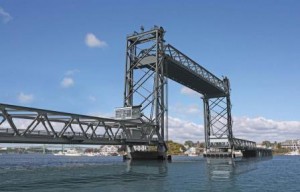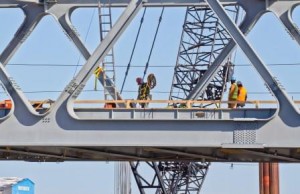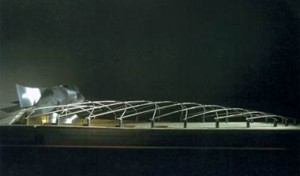Those of us who work in the steel construction arena are often proud of the work that we do. We take pictures of our projects. Bender/rollers, companies that specialize in curving steel, communciate the value they add to a given project through pictures. It is often the case that what makes a given project exceptional is its incorporation of these curved elements. The question arises, What kinds of pictures help promote the use of steel in construction, and, more specifically, what kinds of pictures promote the use of curved steel in construction.
During the design phase when owners are working with architects and engineers, architectural renderings are often developed. At times these renderings are difficult to distinguish from actual photographs. And with new technology, graphic artists can “photo shop” component images comprised of computer-generated images and actual photos. In the picture below, the bridge is a drawing; the background is a photograph. The composite picture was available before the actual bridge was built.
This picture allows the owner to visualize what the bridge will look like at the project site when it is finished. The close-up photograph of the bridge is valued by the roller/bender, the fabricator, and the erector because it shows that the trusses being erected are gussetless, an aspect unique to this bridge. Also unique is having the plate curved cold, a process not previously used on a vehicular bridge. But most importantly, this photo highlights the contribution of these team members.
In general, the owner wants to see the renderings or models of the finished building. The bender/roller wants to highlight the curved steel in the rolling, in the fabrication, in the erection and in the final structure. The fabricator wants to see the skeleton of the project which is his structural fabrication. And the erector wants to see the project going up.
Take, for example, the Pritzker Pavilion in Chicago’s Millennium Park. Internationally renowned architect, Frank Gehry made models of his design.
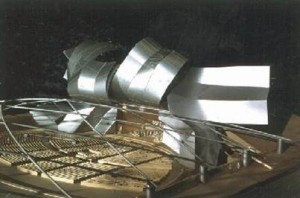
The roller/bender took pictures of the curving of 20in pipe for the trellis.
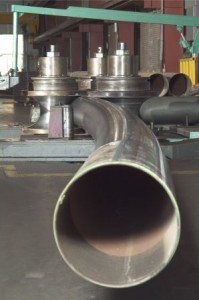
The fabricator took pictures of the welding and assembly of the steel pipe.
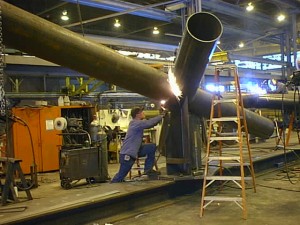
The erector took pictures of the erecting of the curved and welded pipe which forms a large trellis above the seating areas.
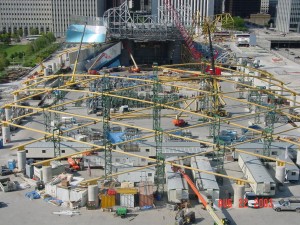
And the owner took pictures of the finished music pavilion and its place in Millennium Park.
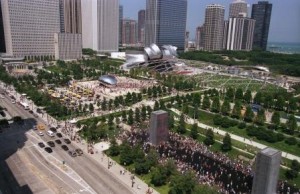
Each team member, of course, is proud of its contribution to a given project and values the contribution and cooperation of the other members needed to transform architectural drawings and models into reality.

